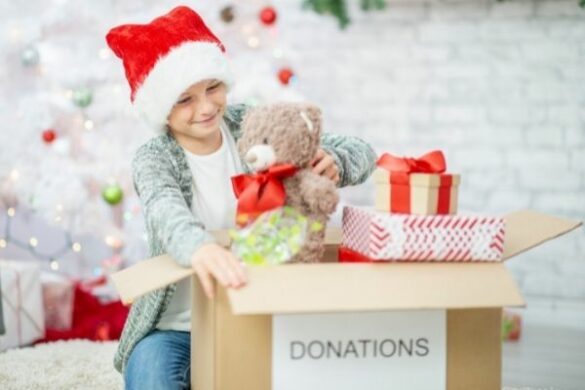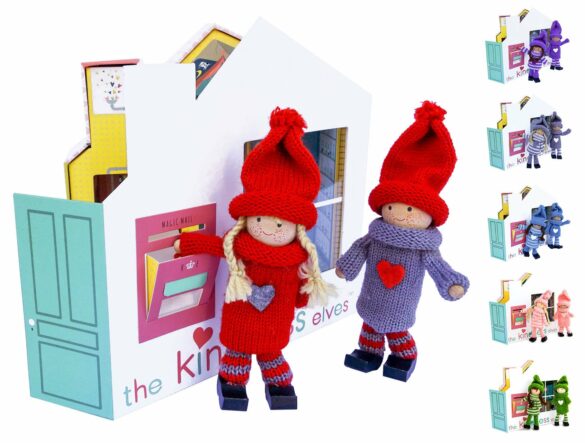Children are more egocentric than adults. “Egocentrism refers to the child’s inability to see a situation from another person’s point of view.” It’s not their fault, though, studies have proven that the ability to consider other people’s preferences “are linked with maturation of a brain region involved in self-control.”
As Christmas approaches, this egocentrism is only further enforced by their external environment, because whether we like it or not, our kids begin to get bombarded with advertisements and displays that prompt them to think of things they hope to receive at Christmas.
They make lengthy wishlists, can’t enter a shop without adding to them, and are asked by every second adult they come into contact with what they want to get for Christmas. By the time Christmas day arrives, most children have built up high expectations for a day full of near-on endless presents and few are focused on the spirit of Christmas and giving to others.
What can we do to combat this self-centred approach, which will inspire our kids to give generously and think more of others at Christmas time?
Here are 5 easy strategies to encourage your children to be more giving.
Involve them in the Christmas shopping
The easiest way to teach kids anything is to model it, so when possible (and even though it can be completely punishing when they continue to point out things for themselves) you should try to include the kids in your Christmas shopping by taking them along with you to the shops so that they can be a part of the gifting process and observe how you put thought into what someone else might like.
If this is too difficult or you’re intent on shopping online, let them sit beside you when you’re on the computer and (even if you know exactly what you plan to buy) make a game out of trying to think of something for each person in your family and go through the search results with your kids.
Bring in the “kindness elves”
Move over Elf on the Shelf, there are new elves in town and they’re here on a more meaningful mission. The Kindness Elves toys come with a storybook that “explains how they first came to meet children and work together on acts of kindness as a team. The Story of the Kindness Elves introduces children to the joy that showing daily acts of kindness can bring, in whimsical and magical ways.” There are lots of different ways you can use the kindness elves to reinforce their mission. Already got an elf on the shelf? Not a worry! Use him in exactly the same way by getting him to assign similar random acts of kindness to your kids every time he moves.
Encourage homemade gifts
Take advantage of kids’ egocentrism by encouraging them to make something that they can be proud of and give to someone else. It could be as simple as a card or hand-painted wrapping, or if you have crafty inclinations you could try some of these homemade Christmas gift ideas.
Let them help you with Christmas cards
Do you give Christmas cards to your friends or your children’s friends? If making the cards is a stretch, buy a few packs of different cards so that you can create a fun task out of asking your child to help you pick a card that each person will really like. They can also help put on the stamps or draw a picture inside. It’s just one more little way that they can witness you giving and thinking about someone other than yourself at Christmas time.
Inspire charitable giving
Reminding our kids just how lucky they are, and that there are children who won’t receive anything this Christmas, is an important part of creating awareness of others and instilling gratitude in them. Let them help you choose a gift for a child who is less fortunate than themselves to donate to a charity providing toys for impoverished families.
You can also encourage them to give any gifts they make to neighbours or elderly relatives who live alone and may not otherwise be overwhelmed by gifts on Christmas Day.

These easy actions will go a long way towards helping your children be appreciative for what they have and teach them that Christmas should revolve around giving, not getting. The more they give, the more they will learn the feeling of joy that giving brings with it, at Christmas and the whole year through.
Keep the kindness going beyond Christmas Day by teaching children ways they can ‘pay it forward’ beyond Christmas.

